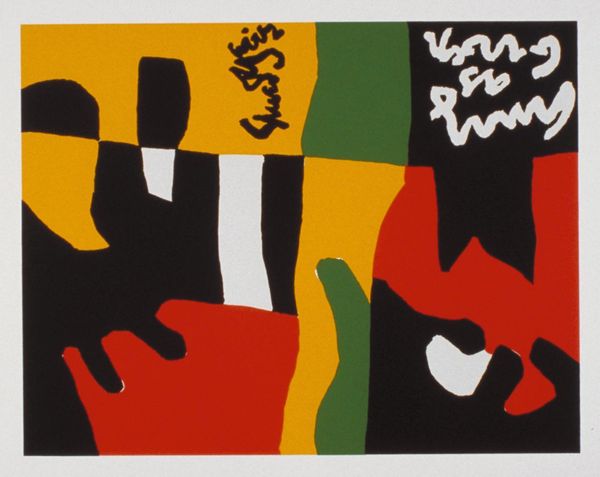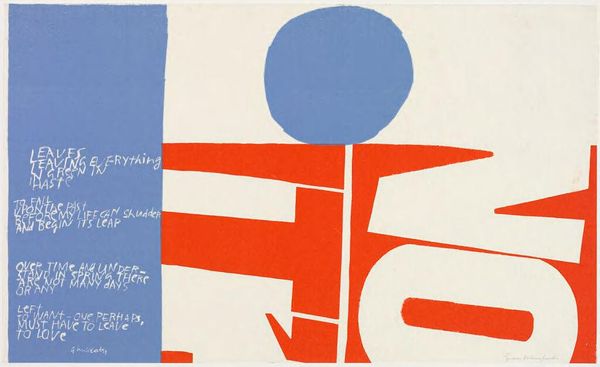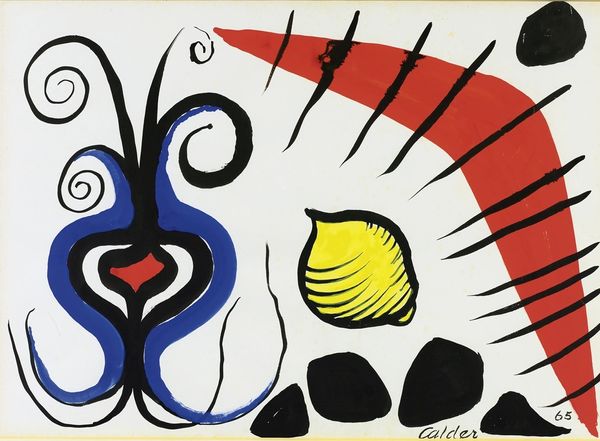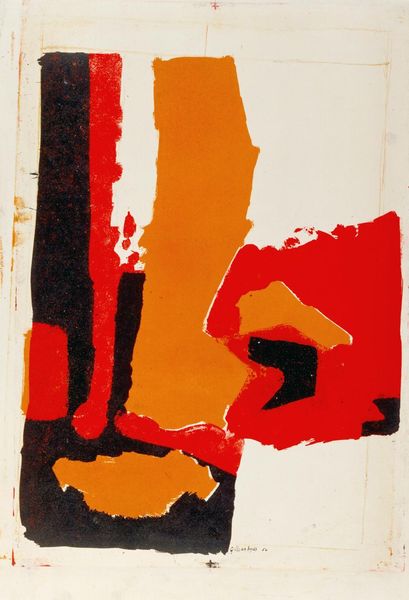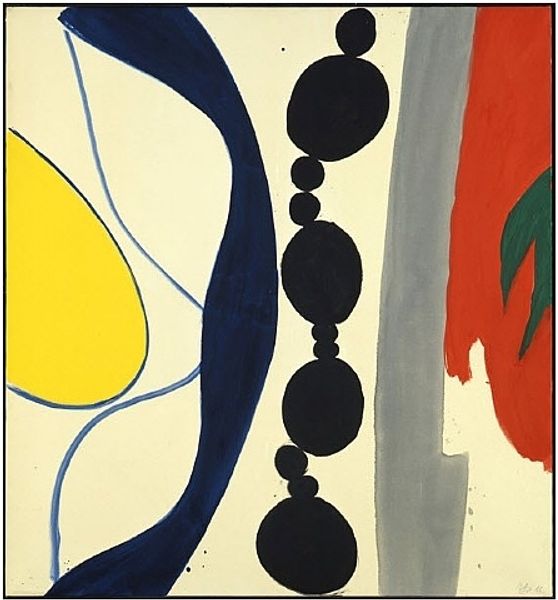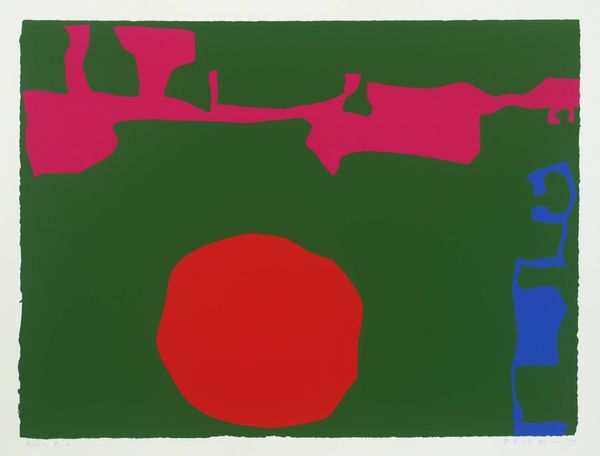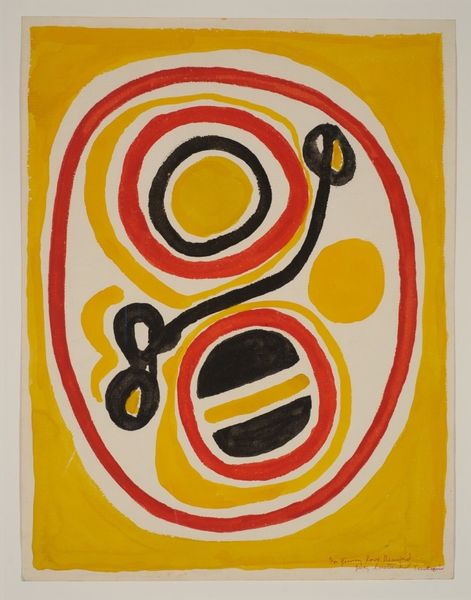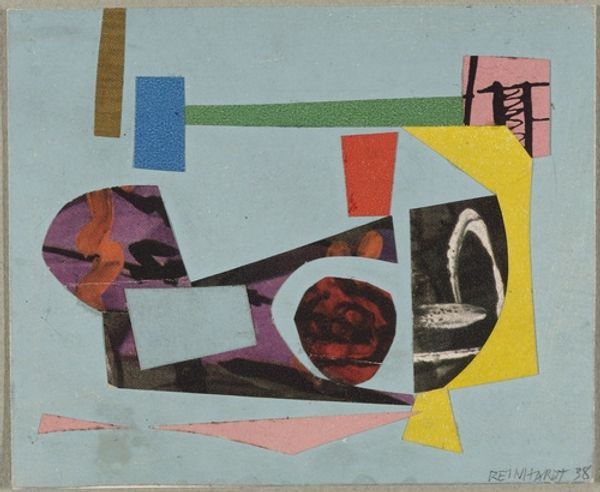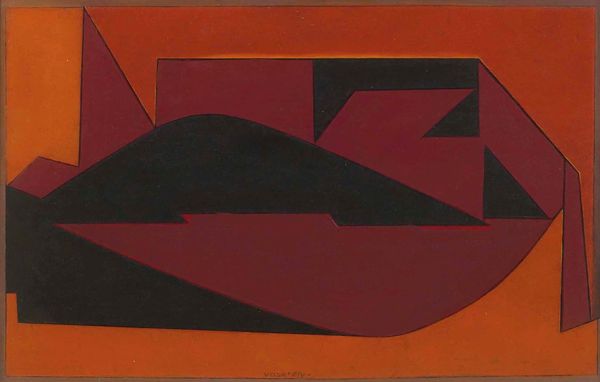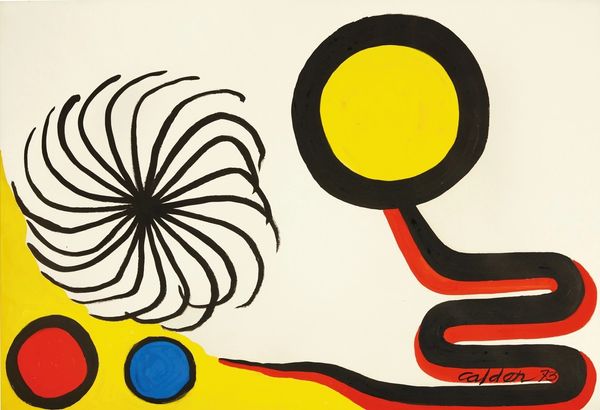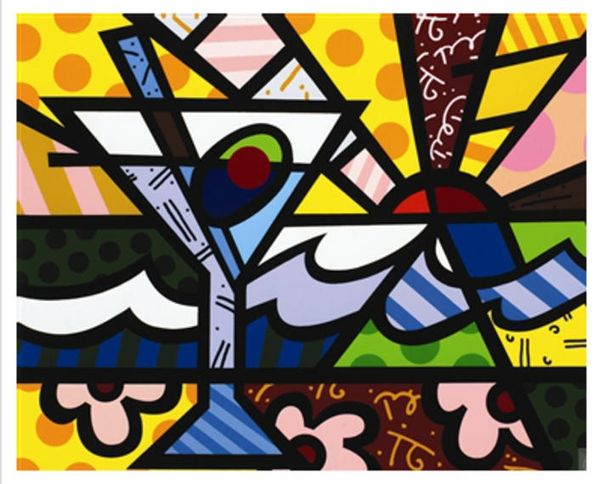
Dimensions: sheet: 42.2 x 65 cm (16 5/8 x 25 9/16 in.)
Copyright: National Gallery of Art: CC0 1.0
Curator: The visual dynamic immediately strikes me: this is Henri Matisse’s "The Swimmer in a Pool," possibly from 1947. Note the careful arrangement of tempera and print. Editor: It does have an undeniable boldness to it. The composition and large shapes create a sense of restrained yet energetic movement, almost celebratory. Curator: Indeed, Matisse orchestrates this vibrancy through pure forms. The tension of black fields abutting the light-catching white swimmer generates a unique energy, which Matisse accentuates further with carefully positioned color blocks: green, red, blue, and yellow. The swimmer form itself almost serves as a focal point for the chromatic and spatial relationship of the surface. Editor: Yet those abstracted shapes invite further interpretation. What swimmer truly contorts themselves into those sharp angles? Instead, is it possible this form serves as a commentary on identity—fluid and multifaceted, yet boxed-in by socio-political barriers and stark definitions? Or is it something more literal, something as basic as segregation? Curator: While historical contexts are insightful, I'm drawn to the pure play of contrasts. Notice, for instance, how Matisse uses the print medium, which historically produced accessible reproductions of artworks, to explore flatness, pushing back against illusions of depth. The strategic employment of primary color harmonies, however, makes for surprisingly successful optical spatial recessions. Editor: But perhaps the simplicity of these color choices and shapes speaks to the immediate postwar period when this piece was created. Consider a society rebuilding after unimaginable atrocities; Matisse offers forms reduced to their essentials, perhaps mirroring a yearning for uncomplicated peace and new beginnings. The single "keyhole" cut from the large red form only confirms the feeling of uncertainty despite obvious clarity, and it subtly hints at access or lack thereof. Curator: I cannot deny that your reading gives additional depth to an otherwise formal exploration. The “keyhole,” previously just a mark, may unlock new interpretative passages. Editor: Exactly, which proves even geometric abstractions have a valuable connection to the human experience. Art becomes alive once situated within discourse!
